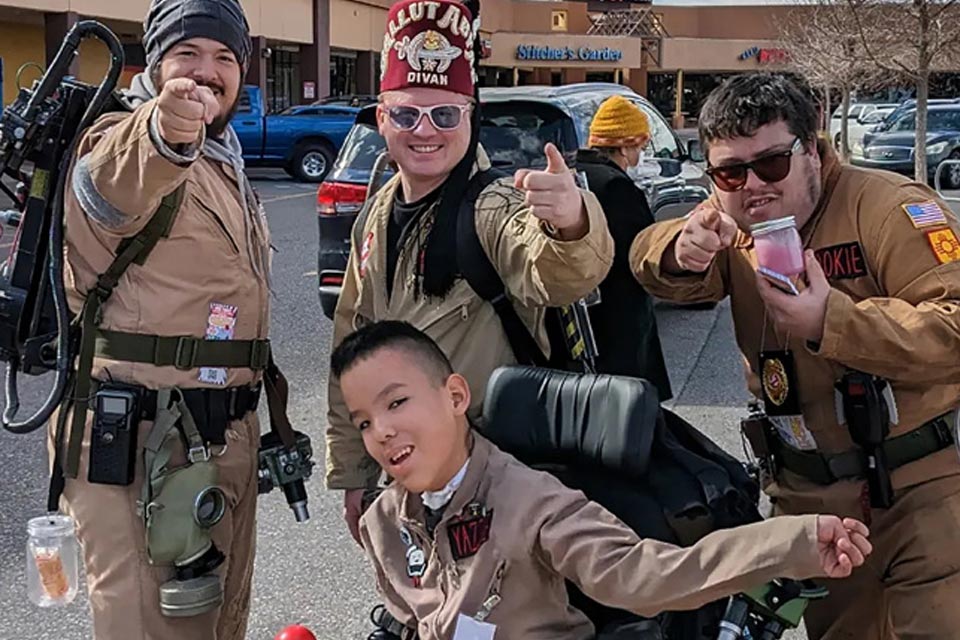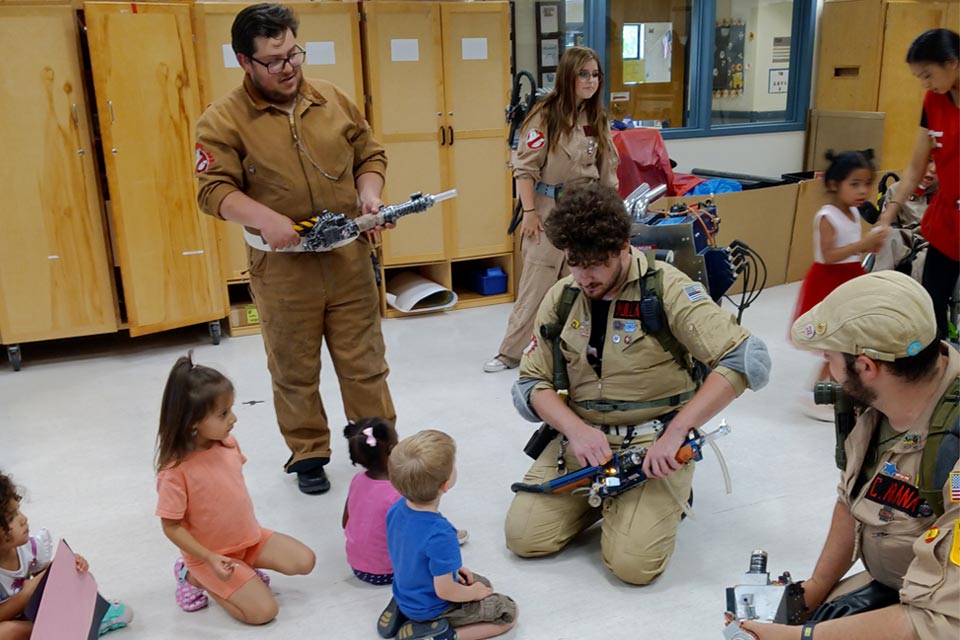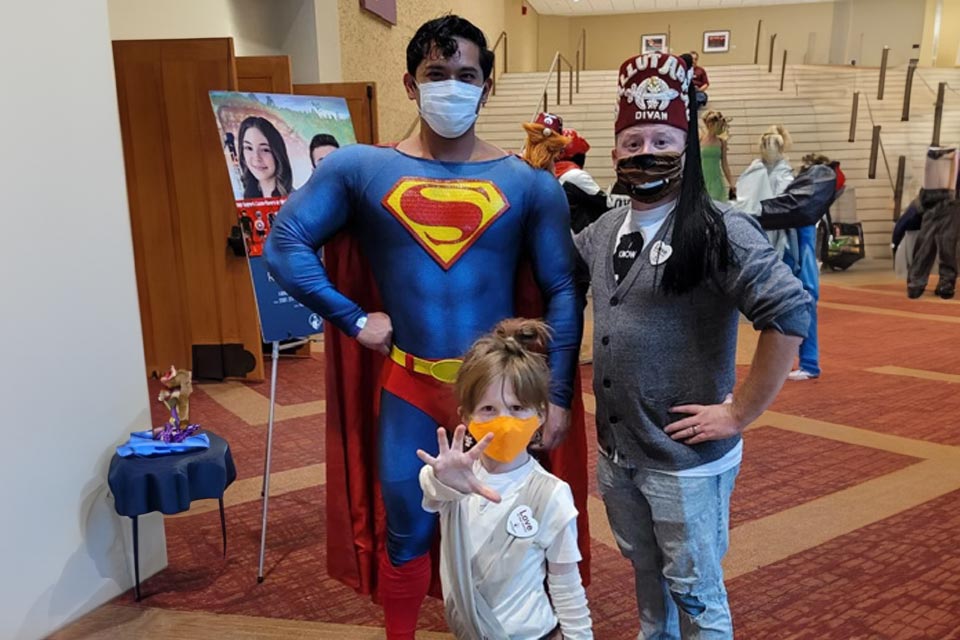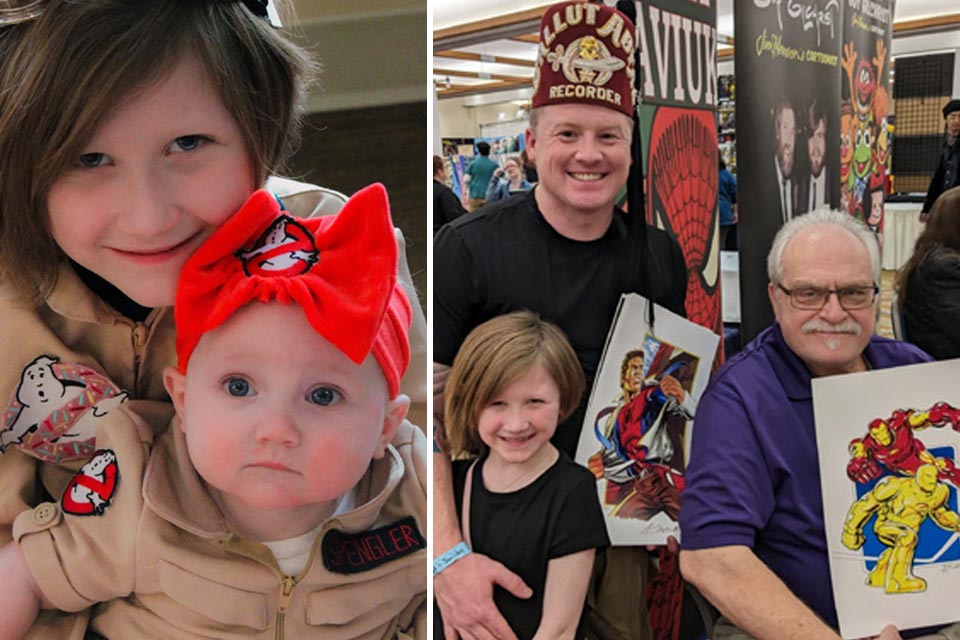Passion for Performance

John-Michael Phillips and friends dressed up as Ghostbusters
‘Cosplaying For a Cause’ Inspires New Mexico Shriners
With a huge heart for giving back to children’s causes and a passion for dressing up, John-Michael Phillips started the Cause-Players, a cosplay unit at his chapter, Ballut Abyad Shriners in Albuquerque, New Mexico. Aficionados of this trendy activity play superheroes and characters in costume.
John-Michael Phillips came up with the name after taking the advice of his wife.
”She mentioned that our slogan should be ‘Cosplaying for a Cause’ and from there the pun was made,” he said.
Officially a chartered unit as of this year, the group started as a Ghostbusters unit. Interest has grown rapidly, both for the nobles of Ballut Abyad and within the community, with requests for the group to appear in schools, parades and community events, and to partner with local non-profits.
“The reason I developed this unit was because, as someone who has a background in child development, human life sciences and children advocacy, I saw that our patients at the hospitals became excited to talk about what they were interested in,” John-Michael said. “I could sit down next to a kid, and they would be elated talking about their favorite superhero. When we would pass out comics, they would line up just to get a comic with one of their favorite heroes on it,” he said. “I wanted to develop a unit that supported their passions and their interests.”
So, John-Michael found local cosplayers who could teach him what it means to be a cosplayer and why they dress up and do this for children.
The cosplay unit recently hosted a kids’ lunch at their chapter, where nobles outfitted as superheroes joined the kids in eating and watching cartoons. This colorful crew fundraises, too, accepting gigs to organize trunk-or-treats, fun fairs and even haunted houses, dressed as Ghostbusters of course. The group makes appearances at events such as Free Comic Book Day or the drop of a new game or comic series. All these events add up, allowing them to have fun and stay active while raising money that they put back into their operations.

‘Ghostbusters’ appearing at a school where they teach an anti-bullying and inclusion program
Clowning Around
John-Michael, who had a successful career in the military, first became a Shriner in San Antonio, Texas, with the Alzafar Shriners. One of the many committees he was involved with was the clowns, known as the Nemnufs. This experience gave him the opportunity to go to the Shriners Children’s hospitals in Texas to cheer up the children.
“From there, I found my niche performing as a clown reading books and doing voices while reading. This then led me to just sitting down and talking with the kids and learning that many of them were fans, like all children, of Spider-Man, Superman, Batman, the X-Men, the Avengers, and a plethora of other heroes and pop culture series,” he said.
During the COVID pandemic, John-Michael performed voice acting for the kids through Zoom by reading books to them virtually, whether it was in a hospital, classroom, event center, community center, church, or even in their own homes.
“I performed for kids and got to learn what interests them the most,” he said.
In 2021, John-Michael and his family moved to Albuquerque, New Mexico, where he became a Ballut Abyad Shriner and continued to use his Shriners social group to perform for children.
“The first actual cosplay unit we developed was a Ghostbusters unit, and we started performing at schools teaching children about Shriners Children's and what the hospitals do for the children,” John-Michael said. “That quickly evolved into an anti-bullying and inclusion program that had the cosplayers dressed up as superheroes. We asked the children not to be bullies to kids with medical issues.”

John-Michael Phillips wearing his fez at an event alongside Superman and his daughter
The Hero In All of Us
Ballut Abyad then partnered with an Albuquerque non-profit that supports children, called Blessed and Beautiful.
“They reached out to us, because they saw what Shriners Children’s does and the children we help,” he said. “In many aspects, we share a common core ideology.”
The two groups, wanting to do something for the community and for Shriners Children’s patients, created the Comic/Cosplay called The Hero In All of Us. That name gives a nod to the idea that everyone – a child, an adult, a patient, the friend of a patient – has the ability to be a hero and stand up against bullying when they see it.
The great thing about a Shriners unit pairing up with a community organization is that they are able to teach the younger generation about Shriners. John-Michael said they’ve had quite a few high school kids who want to be a part of Shriners join the unit as part of its auxiliary support committee.
“It shows that Shriners are still here for our community,” he said.

Left: John-Michael Phillips' young daughters dressed up like Ghostbusters. Right: John-Michael Phillips posing with his daughter and another man, holding up superhero artwork at an event.

Stay in Touch
Join our mailing list to keep up-to-date on all that's happening at Shriners International.

